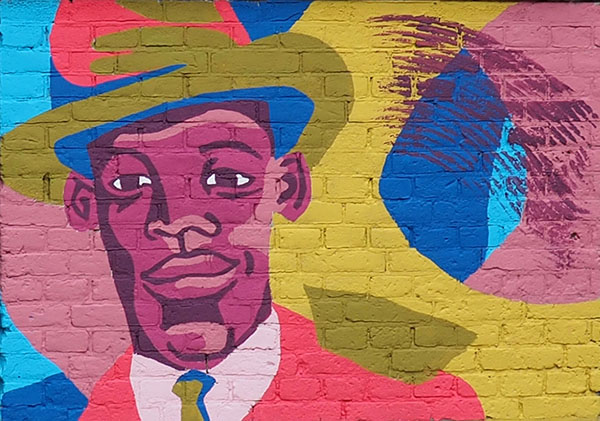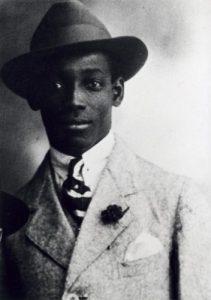A blog about (hidden) Amsterdam
A blog about (hidden) Amsterdam
“The Wall of Surinamese and Black Heroes” is a beautiful mural by Hedy Tijn & Dewy “Butterfingaz” Elsinga at the entrance to the Black Archives at the Hugo Olijfveldhuis. We want everyone to know their stories. Up first, pioneer of untold history and Resistance hero, Anton de Kom.

Anton de Kom was born in Suriname in 1898 to a formerly enslaved person. He spent his entire life advocating for the poor and working to improve their lives. He did much of his advocacy in the Netherlands, where he’d come for work in his early 20s.
He went back to Suriname in 1933 to help stranded Indonesian and Indian workers. He was kept under house arrest and then imprisoned by the colonial government. When a protest outside the prison was met with violence, Anton de Kom was exiled without trial to the Netherlands, which was undergoing the Great Depression. Exiled from his homeland, he wrote “We Slaves of Suriname”, which told the story of the people of his country, filling in everything that had been left out of official colonial history books.
When the Nazis invaded, he had every reason to run. He was Black and an academic facing an invader who hated both things. He had a family, which hadn’t been treated well by the Dutch government or society. Most people around him fled, collaborated or just tried to keep their heads down. One of the few Resistance leaders to survive the war said there were “never more than four figures’ worth” of people involved in the Dutch Resistance. That’s fewer than 10,000 people in a country that had almost 9 million at the start of 1940.

Anton de Kom chose to fight. He joined a Resistance group in Den Haag that spread information about Nazi activities. After four years, he was arrested and sent to concentration camps, first in the Netherlands, then in Germany, where he died.
Anton de Kom was recently placed in the Canon of the Netherlands, the list of 50 subjects that define Dutch history. What he wrote about Suriname changed how people saw it. He was one of the early writers to realize the importance of filling in untold history stories. Beyond the importance of his writing, he’s someone to be admired because he spent his life striving for economic justice.
Most of all, however, we think about the moment he chose to fight in the Resistance. We think about how, for more than four years, he chose every single day to risk his life to fight against the genocide that killed more than 75% of the Jewish people in the Netherlands. We would canonize him for that courage alone.
We hope you’ll join us someday on our Hidden Gems Tour, where you can learn about more incredible people like Anton de Kom.
Check out some more Blamsterdam! posts.
Private Museum Tour
See the highlights and hidden icons of Amsterdam’s world-renowned Rijksmuseum in a private guided tour that explores who creates art and what stories it’s used to tell. And don’t worry about museum tickets. We’ve got you covered.


Small-Group Walking Tour
This historical tour through the busy Jewish quarter and residential Plantage neighborhood offers a selection of stories from BIPOC, LGBTQ+, Jewish and women’s history. It’s the perfect way to get an alternative view of Amsterdam.


Self-Guided Digital Tour
Use your phone to explore Amsterdam! This self-guided tour uses audio, images, maps, and text to introduce you to the women, BIPOC, LGBTQ+, and Jewish people who made Amsterdam what it is.


Small-Group Walking Tour
In 1593, Jewish Amsterdammers began building a community in the relative safety of the city that transformed both the Netherlands and the world. Learn about these creative, compassionate, and challenging mavericks and their impact.


Small-Group Walking Tour
The women who shaped Amsterdam are more complex than traditional tours would have you believe. Go to Amsterdam’s historic sites to hear stories of women who fought, wrote, calculated and led through the city’s chaotic and complicated past.


Small-Group Walking Tour
The world’s first gay marriage was officiated by the Mayor of Amsterdam at its City Hall. But did you know that the city’s LGBTQ+ history stretches centuries? Meet historical Amsterdammers across the gender spectrum and sexual orientations.


Private Walking Tour
Get a personalized tour that covers the interests you’re curious about and the neighborhoods you want to see. Choose pick-up/drop-off locations, any combination of our hidden history topics, and themes such as artists, politicians, and rebels.

